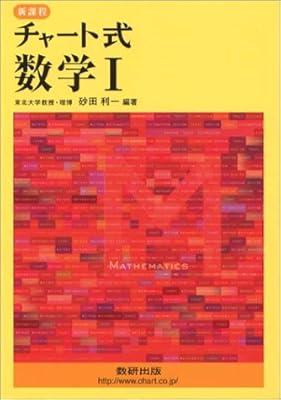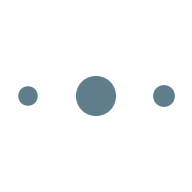
Toshikazu Sunada (Written by)
Zuken Publishing Co., Ltd. (Publishing House)
2003April 1, 2016 (Release date)
Hardcover (Format)
今日も解いていくぞ~。
問43からだ。
Now、\(\left( b+c \right) :\left( c+a \right) :\left( a+b \right) =4:5:6\)であるという。
ヒントにしたがって、\(\left( b+c \right) =4k\)、\(\left( c+a \right) =5k\)、\(\left( a+b \right) =6k\)(\(k>0\))とおく。
そしてこの連立方程式を解くと\(a\)、\(b\)、\(c\)But\(k\)represented by。
The rest\(\triangle ABC\)について正弦定理と余弦定理を使うと答えが求められる。
次は問44。
余弦定理と面積を求める公式を使えばいい。
これは簡単だ。
その次は問45。
これも正弦定理や余弦定理、面積の公式を用いて解いていけばいい。
円に内接する四角形の対角をたすと\(180°\)になることに注意だな。
まぁ簡単。
そして問46。
四角錐についての問題だ。
実際に図を描いてみて、断面で切って平面図形を取り出して解くことになる。
僕は余弦定理、面積の公式を使って解いた。
Also、三角錐の体積は\(底面積\times 高さ\times \frac { 1 }{ 3 } \)であることなどを思い出した。
念のため、三角形の相似条件を復習のためまとめておく。
三角形の相似条件は
- 3組の辺の比が全て等しい
- 2組の辺の比とその間の角がそれぞれ等しい
- 2組の角がそれぞれ等しい
They are。
一般的に平面図形(立体)が相似である場合、
- 対応する線分の長さの比はすべて等しい
- 対応する角の大きさはすべて等しい
ということが成り立つらしい。
最後に問47。
相似比が\(m:n\)である図形の面積の比は\({ m }^{ 2 }:{ n }^{ 2 }\)、相似比が\(m:n\)である立体の体積の比は\({ m }^{ 3 }:{ n }^{ 3 }\)They are。
また三角柱の体積は\(底面積\times 高さ \)They are。
これらから(1)は求められる。
次は(2)But、これを僕は間違ってしまった。
四角柱を半分に切って三角柱を作って…みたいな計算をしたのだが、これではうまくいかないんだな。
体積が半分とは限らないみたいだ。
線分ADの延長と線分BGの延長の交点をIなどとして、三角錐I-ABC、三角錐I-DGH、三角錐A-DGHに着目すればいいとのことだ。
そういう風に解くのか~。
これで総合演習のA問題が終わった。
次回からB問題を解いていこう。
難しくなるかな?
Related Posts
- Chart Formula Mathematics 1 part12 [Secondary Function Edition] Toshikazu Sunada (Written by) Zuken Publishing Co., Ltd. (Publishing House) 2003April 1, 2016 (Release date) Hardcover (Format) 今日で2次関数編がラストだ。 問36からやっていこう。 ヒントにあるように以下のようにする。 $$\begin{eqnarray*}f\left( x \right) &=&{ x }^{ 2 }-ax+b-\left( -{ x }^{ 2 }-bx+a \right) \\ &=&2{ x }^{ 2 }-\left( a-b \right) x-\left( a-b \right) \end{eqnarray*}$$ そして\(a-b=t\left( t\neq 0 \right) \)And so on and so on、\(f\left( x \right) \)について\(f\left( x \right) <0\)を満たす実数\(x\)が必ず存在するので、2次関数の頂点の\(y\)座標は\(0\)より小さい。 よって\(T>0\)、\(T<-8\)となる。 あとはヒントにあるように放物線\(y=f\left( x \right) \)の軸は直線\(x=\frac { T }{ 4 } \)なのでこの軸に最も近い整数を考えればいい。 僕はここから悩んでしまって、次のようにした。 \(\frac { T }{ 4 } \)に最も近い整数は、 $$t=4k\left(kは0,-1,-2を除く整数 \right)のときはn=k$$ $$4k<t\le 4k+2\left(kは-1,-2を除く整数 \right)のときはn=k$$ $$4k+2<T< 4\left( k+1 \right) \left(kは-1,-2を除く整数 \right)のときはn=k+1$$ そして\(x=n\)を\(f\left( x \right)\)に代入すると\(f\left( x \right)\)は\(t\)の1次式と見ることができる。 あとは考えている\(t\)の範囲において、これまた\(k\)の範囲についても考慮しながら最大値の議論をしていくと、\(f\left( n \right) \le -2\)または\(f\left( n \right) < 0\)と分かり、題意を満たす整数\(n\)が必ず存在すると分かった。 解くのにかなり時間がかかってしまった… 実際の試験だったら時間がかかりすぎてしまって、僕は明らかにこの問題を解けていないだろう。 However、正答例ではもっと簡単に解いていた。 $$T<-8のときf\left( -2 \right) =8+t<0$$…
- Chart Formula Mathematics 1 Part10 [Secondary Function Edition] Toshikazu Sunada (Written by)Zuken Publishing Co., Ltd. (Publishing House)2003April 1, 2016 (Release date)Hardcover (Format) 今日も2次関数のB問題を進めていこう。問30からだ。(1)は普通に場合分けをして絶対値を外せばいい。(2)がこの問題のポイントとなるところだろう。【1】\(x\ge a\)のとき、\(a\ge \frac { 1 }{ 2 } \)の場合と\(a<\frac { 1 }{ 2 } \)の場合で最小値\(m\left( a \right) \)が異なるので、場合分けする。同様に【2】\(x<a\)のときは、\(a>-\frac { 1 }{ 2 } \)の場合と\(a\le -\frac { 1 }{ 2 } \)の場合で場合分けが必要だ。そしたら\(a\ge \frac { 1 }{ 2 } \)、\(-\frac { 1 }{ 2 } <a<\frac { 1 }{ 2 } \)、\(a\le -\frac { 1 }{ 2 } \)の場合で【1】と【2】のそれぞれの差をとってどちらがより小さいかを明らかにし、関数\(f\left( x \right) \)の最小値\(m\left( a \right) \)を求めることになる。僕はグラフを見てなんとなく直感で解いたが、それではダメだったんだな。しっかり場合分けが必要みたいだ。(3)The (2)がちゃんと解けていれば簡単だ。 次は問31。First(1)。今\(a\)、\(b\)、\(x\)、\(y\)全てが正の実数なので、以下の不等式 $$\frac { x }{ a } \le \frac { y }{ B } $$ の両辺に\(ab\)をかけたり、2乗したりしても、不等号の向きは変わらないし、通常は2乗することで生じる余計な解が含まれることもない。あとは条件式を利用して\({ y }^{ 2 }\)を消去すればいい。(2)The (1)から\(0\le x\le \frac { a }{ \sqrt { { a }^{…
- Chart Equation Mathematics A Part 6 【Probability】 Takaaki Yanagawa (Written by)Zuken Publishing Co., Ltd. (Publishing House)2003April 1, 2016 (Release date)Hardcover (Format) Let's solve it again this time。First of all, Question 23.。Two dice are different(3)And(4)can be calculated as independent of the trial。Next up is Question 24.。It would be easy to think of after-events like hints。And Question 25.。少なくとも1つという表現には余事象を考えればいいらしい。僕は場合分けして互いに排反として確率の加法定理で普通に解いた。あとは問26。(1)は反復試行の確率だ。(2)は期待値を求めればいいがヒントによると次のように表せるらしい。 $$ X=k \left(k=0, 1, 2, \cdots, n \right)のときの確率が{ _{ n }{ C }_{ k }{ P }^{ k }{ q }^{ n-k } }\quad \left(q=1-p \right) $$ $$ である変量Xの期待値はnpである $$ ここからはB問題だ。問27の(2)はさいころがちょうど3色で塗られている組み合わせは①(1面,1面,4面)、②(1面,2面,3面)、③(2面,2面,2面)They are。使う3色の選び方は\(_{ 6 }{ C }_{ 3 } = 20\)通り。それぞれについて①の場合は\( 3 \times _{ 6 }{ C }_{ 4 } \times _{ 2 }{ C }_{ 1 } = 90\)通り。②の場合は\( 3! \times _{ 6 }{ C }_{ 3 } \times _{ 3 }{ C }_{ 2 } = 360\)通り。③の場合は\( _{ 6 }{ C }_{ 2 } \times _{ 4 }{ C }_{ 2 } \times _{…

